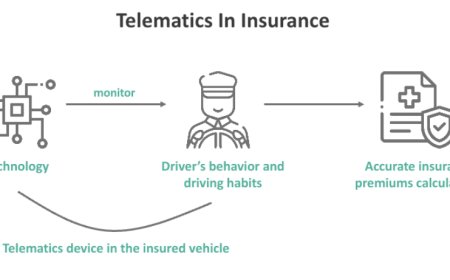How Long Does Metformin HCl Take to Lower Blood Sugar?
Metformin hcl 500 mg is a widely prescribed oral medication used to manage type 2 diabetes mellitus (T2DM). It helps lower blood sugar (glucose) levels and improves the body's response to insulin. One of the most common questions from people starting metformin therapy is:
"How long does it take for Metformin HCl to start lowering blood sugar?"
The answer depends on several factors such as the form of the drug (immediate or extended release), dosage, individual response, diet, activity level, and overall health. This article provides a detailed breakdown of how metformin works, when its effects begin, and what to expect during treatment.
? What Is Metformin HCl?
Metformin HCl is a biguanide class medication that works by:
-
Decreasing glucose production in the liver (hepatic gluconeogenesis)
-
Increasing insulin sensitivity in muscle and fat cells
-
Decreasing glucose absorption in the intestines
Unlike many diabetes medications, metformin does not stimulate insulin production, which means it typically does not cause low blood sugar (hypoglycemia) on its own. It's often prescribed as first-line therapy for type 2 diabetes and is also used off-label for conditions like polycystic ovary syndrome (PCOS) and prediabetes.
?? How Long Does Metformin Take to Start Working?
?? Immediate-Release Metformin (IR):
This form begins working relatively quickly. Here's what to expect:
-
Initial blood sugar effect: Within 4872 hours (23 days)
-
Full therapeutic effect: Typically 12 weeks after consistent use
-
Maximum effect: May take 46 weeks of regular dosing
?? Extended-Release Metformin (XR or ER):
This form is designed to release slowly in the body, minimizing side effects like nausea.
-
Initial blood sugar effect: Usually noticeable by Day 3 to 5
-
Full therapeutic effect: Within 23 weeks, sometimes longer
In both forms, improvements in fasting blood sugar and HbA1c (glycated hemoglobin) can be seen over several weeks to months with consistent use.
How Much Can Metformin Lower Blood Sugar?
Metformins impact on blood sugar can vary depending on the dose and individual metabolic response. Here are general expectations:
-
Fasting blood sugar (FBS): May drop by 2050 mg/dL
-
HbA1c reduction: About 1.01.5% on average over 3 months
-
Post-meal sugar levels: May decrease moderately with regular use
How to Monitor Progress
To understand how metformin is working in your body, your healthcare provider may recommend:
-
Daily home glucose monitoring (fasting and post-meal readings)
-
HbA1c testing every 3 months
-
Weight monitoring, as some people experience modest weight loss
-
B12 level monitoring (especially for long-term users)
If your numbers arent improving after a few weeks, your doctor may adjust the dose or combine metformin with another diabetes medication.
Factors That Affect How Fast Metformin Works
Several personal and lifestyle factors can influence how quickly and effectively metformin works:
1. Dosage
-
Initial doses usually start at 500 mg once or twice daily.
-
Dosages may increase to 2,000 mg/day, depending on tolerance and blood sugar levels.
-
Higher doses may work faster but also carry a higher risk of side effects.
2. Formulation (IR vs. XR)
-
Immediate-release may act faster but with more gastrointestinal side effects.
-
Extended-release is gentler on the stomach but slower to reach full effect.
3. Diet and Lifestyle
-
A low-carb or balanced diet enhances metformins effectiveness.
-
Regular exercise improves insulin sensitivity and speeds up results.
4. Other Medications
-
Some drugs (e.g., steroids, diuretics) can counteract metformins effects.
-
Combination therapy with insulin or sulfonylureas may be required for faster or stronger results.
5. Individual Response
-
Genetic factors, gut microbiota, and liver function can all influence how your body responds to metformin.
Tips to Enhance Metformin's Blood Sugar-Lowering Effects
-
Take it with meals to reduce stomach upset and improve absorption.
-
Follow a healthy diet rich in fiber, vegetables, and lean proteins.
-
Avoid excessive alcohol, which can interact with metformin and increase the risk of lactic acidosis.
-
Stay activeeven 30 minutes of walking a day can improve insulin sensitivity.
-
Stick to a routine, as missed doses reduce the effectiveness of treatment.
What If Metformin Isnt Working?
If your blood sugar hasnt improved within 4 to 6 weeks, talk to your doctor. Possible reasons include:
-
Incorrect dose or formulation
-
Non-adherence to medication or diet
-
Interactions with other drugs
-
Advanced beta-cell dysfunction (low insulin production)
-
Underlying conditions like Cushings syndrome or thyroid disorders
Your doctor may:
-
Increase the dose gradually
-
Switch to extended-release for better tolerability
-
Add another medication like a GLP-1 agonist, SGLT2 inhibitor, or insulin
-
Run additional tests to assess insulin resistance and organ function
? How Long Does It Take to See HbA1c Improvement?
HbA1c is a blood test that reflects your average blood sugar over 23 months. Although daily blood sugar can improve within days, significant changes in HbA1c take about 812 weeks of consistent medication use and lifestyle adjustments.
Safety and Side Effects to Monitor
Most people tolerate metformin well, but you may experience:
-
Nausea
-
Diarrhea
-
Metallic taste
-
Bloating or gas
These symptoms often fade within 12 weeks. Starting with a low dose and increasing gradually helps reduce side effects.
Rare but serious side effect:
-
Lactic acidosis (life-threatening but very rare), especially in people with kidney or liver problems. Symptoms include muscle pain, breathing trouble, and confusionseek immediate medical help if these occur.
Final Thoughts
Metformin HCl starts lowering blood sugar within 23 days, but its full effect may take 12 weeks, with maximum benefits visible after 46 weeks. It is a cornerstone of type 2 diabetes management due to its safety, cost-effectiveness, and ability to improve both fasting and long-term glucose control.
To get the most out of metformin:
-
Be consistent with your doses
-
Support the medication with lifestyle changes
-
Monitor your progress with home glucose tests and lab work
-
Communicate with your healthcare provider regularly
With the right approach, metformin can significantly improve your blood sugar control and reduce the long-term risks associated with diabetes.

















































